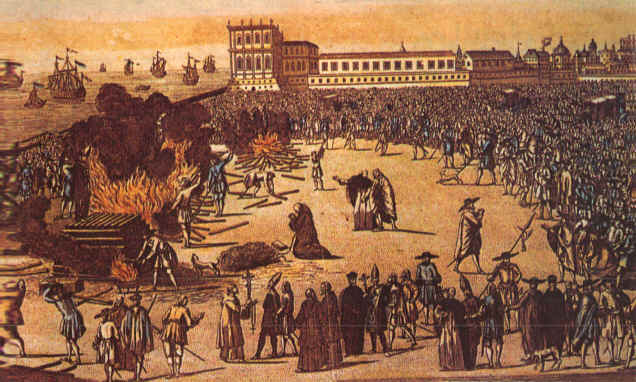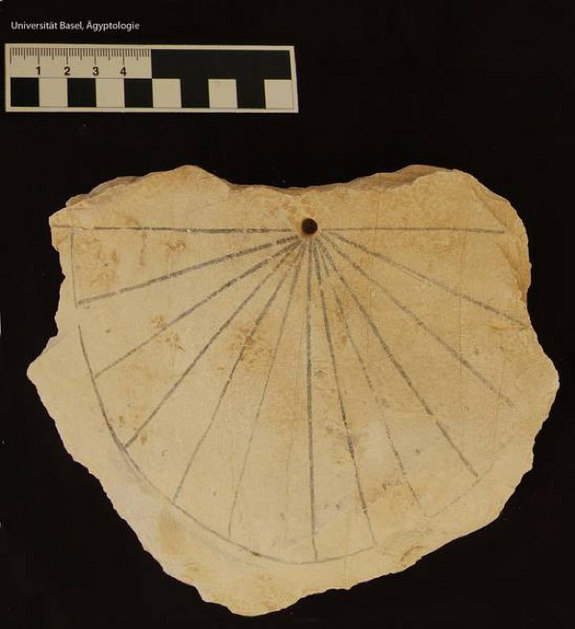|
Zag De Sujurmenza
Rabbi Zag de Sujurmenza was a Jewish convert of 13th-century Spain who helped King Alfonso X of Castile with his scientific works. Zag de Sujurmenza was commissioned by the king to write ''Astrolabio redondo'' (spherical astrolabe), ''Astrolabio llano'' (flat astrolabe), Constelaciones (constellations) and ''Lámina Universal'' (an instrument that improved on the astrolabe); he also translated the book ''Armellas de Ptolemy'', and wrote about the ''Piedra de la sombra'' (stone of the shadow, or sundial), ''Relox de agua'' (clepsydra, or water clock) ''Argente vivo o azogue'' (quicksilver or mercury) and ''Candela'' (candle clock). Of his works, the most important are those of the "round astrolabe" and the "flat astrolabe". In the first, the author rises to profound scientific considerations that reveal the vast knowledge he possessed in sciences. It has been said that with this book, Zag Sujurmenza reformed the character of the science of astronomy and contributed to its advancemen ... [...More Info...] [...Related Items...] OR: [Wikipedia] [Google] [Baidu] |
Conversos
A ''converso'' (; ; feminine form ''conversa''), "convert", () was a Jew who converted to Catholicism in Spain or Portugal, particularly during the 14th and 15th centuries, or one of his or her descendants. To safeguard the Old Christian population and make sure that the ''converso'' "New Christians" were true to their new faith, the Holy Office of the Inquisition was established in Spain in 1478. The Catholic monarchs Ferdinand and Isabella expelled the remaining openly practising Jews by the Alhambra decree of 1492, following the Christian ''Reconquista'' (reconquest) of Spain. However, even a significant proportion of these remaining practising Jews chose to join the already large ''converso'' community rather than face exile. ''Conversos'' who did not fully or genuinely embrace Catholicism, but continued to practise Judaism in secrecy, were referred to as ''judaizantes'' ("Judaizers") and pejoratively as ''marranos'' ("swine"). New Christian converts of Muslim origin ... [...More Info...] [...Related Items...] OR: [Wikipedia] [Google] [Baidu] |
13th-century Astronomers
The 13th century was the century which lasted from January 1, 1201 ( MCCI) through December 31, 1300 ( MCCC) in accordance with the Julian calendar. The Mongol Empire was founded by Genghis Khan, which stretched from Eastern Asia to Eastern Europe. The conquests of Hulagu Khan and other Mongol invasions changed the course of the Muslim world, most notably the Siege of Baghdad (1258), the destruction of the House of Wisdom and the weakening of the Mamluks and Rums which, according to historians, caused the decline of the Islamic Golden Age. Other Muslim powers such as the Mali Empire and Delhi Sultanate conquered large parts of West Africa and the Indian subcontinent, while Buddhism witnessed a decline through the conquest led by Bakhtiyar Khilji. The Southern Song dynasty would begin the century as a prosperous kingdom but would eventually be invaded and annexed into the Yuan dynasty of the Mongols. The Kamakura Shogunate of Japan would be invaded by the Mongols. Goryeo resiste ... [...More Info...] [...Related Items...] OR: [Wikipedia] [Google] [Baidu] |
13th-century Translators
The 13th century was the century which lasted from January 1, 1201 ( MCCI) through December 31, 1300 ( MCCC) in accordance with the Julian calendar. The Mongol Empire was founded by Genghis Khan, which stretched from Eastern Asia to Eastern Europe. The conquests of Hulagu Khan and other Mongol invasions changed the course of the Muslim world, most notably the Siege of Baghdad (1258), the destruction of the House of Wisdom and the weakening of the Mamluks and Rums which, according to historians, caused the decline of the Islamic Golden Age. Other Muslim powers such as the Mali Empire and Delhi Sultanate conquered large parts of West Africa and the Indian subcontinent, while Buddhism witnessed a decline through the conquest led by Bakhtiyar Khilji. The Southern Song dynasty would begin the century as a prosperous kingdom but would eventually be invaded and annexed into the Yuan dynasty of the Mongols. The Kamakura Shogunate of Japan would be invaded by the Mongols. Goryeo resist ... [...More Info...] [...Related Items...] OR: [Wikipedia] [Google] [Baidu] |
Spanish Translators
Spanish might refer to: * Items from or related to Spain: **Spaniards are a nation and ethnic group indigenous to Spain **Spanish language, spoken in Spain and many Latin American countries **Spanish cuisine Other places * Spanish, Ontario, Canada * Spanish River (other), the name of several rivers * Spanish Town, Jamaica Other uses * John J. Spanish (1922–2019), American politician * "Spanish" (song), a single by Craig David, 2003 See also * * * Español (other) * Spain (other) * España (other) * Espanola (other) * Hispania, the Roman and Greek name for the Iberian Peninsula * Hispanic, the people, nations, and cultures that have a historical link to Spain * Hispanic (other) * Hispanism * Spain (other) * National and regional identity in Spain * Culture of Spain * Spanish Fort (other) Spanish Fort or Old Spanish Fort may refer to: United States * Spanish Fort, Alabama, a city * Spanish Fo ... [...More Info...] [...Related Items...] OR: [Wikipedia] [Google] [Baidu] |
Spanish Roman Catholics
Spanish might refer to: * Items from or related to Spain: **Spaniards are a nation and ethnic group indigenous to Spain **Spanish language, spoken in Spain and many Latin American countries **Spanish cuisine Other places * Spanish, Ontario, Canada * Spanish River (other), the name of several rivers * Spanish Town, Jamaica Other uses * John J. Spanish (1922–2019), American politician * "Spanish" (song), a single by Craig David, 2003 See also * * * Español (other) * Spain (other) * España (other) * Espanola (other) * Hispania, the Roman and Greek name for the Iberian Peninsula * Hispanic, the people, nations, and cultures that have a historical link to Spain * Hispanic (other) * Hispanism * Spain (other) * National and regional identity in Spain * Culture of Spain * Spanish Fort (other) Spanish Fort or Old Spanish Fort may refer to: United States * Spanish Fort, Alabama, a city * Spanish Fort ... [...More Info...] [...Related Items...] OR: [Wikipedia] [Google] [Baidu] |
Spanish Jews
Spanish and Portuguese Jews, also called Western Sephardim, Iberian Jews, or Peninsular Jews, are a distinctive sub-group of Sephardic Jews who are largely descended from Jews who lived as New Christians in the Iberian Peninsula during the immediate generations following the forced expulsion of unconverted Jews from Spain in 1492 and from Portugal in 1497. Although the 1492 and 1497 expulsions of unconverted Jews from Spain and Portugal were separate events from the Spanish and Portuguese Inquisitions (which were established over a decade earlier in 1478), they were ultimately linked, as the Inquisition eventually also led to the fleeing out of Iberia of many descendants of Jewish converts to Catholicism in subsequent generations. Despite the fact that the original Edicts of Expulsion did not apply to Jewish-origin New Christian '' conversos'' —as these were now legally Christians— the discriminatory practices that the Inquisition nevertheless placed upon them, whi ... [...More Info...] [...Related Items...] OR: [Wikipedia] [Google] [Baidu] |
Converts To Roman Catholicism From Judaism
Religious conversion is the adoption of a set of beliefs identified with one particular religious denomination to the exclusion of others. Thus "religious conversion" would describe the abandoning of adherence to one denomination and affiliating with another. This might be from one to another denomination within the same religion, for example, from Baptist to Catholic Christianity or from Sunni Islam to Shi’a Islam. In some cases, religious conversion "marks a transformation of religious identity and is symbolized by special rituals". People convert to a different religion for various reasons, including active conversion by free choice due to a change in beliefs, secondary conversion, deathbed conversion, conversion for convenience, marital conversion, and forced conversion. Proselytism is the act of attempting to convert by persuasion another individual from a different religion or belief system. Apostate is a term used by members of a religion or denomination to refer to s ... [...More Info...] [...Related Items...] OR: [Wikipedia] [Google] [Baidu] |
Libros Del Saber De Astronomía
The , ( osp, Libro del saber de astrología), "Books of wisdom of astronomy/astrology of King Alfonso X of Castile", is a series of books of the medieval period, composed during the reign of Alfonso X of Castile. They describe the celestial bodies and the astronomical instruments existing at the time. The collection is a group of treatises on astronomical instruments, like the celestial sphere, the spherical and plane astrolabe, saphea, and universal plate for all latitudes, for uranography or star cartography that can be used for casting horoscopes. The purpose of the rest of the instruments, the quadrant of the type called vetus, sundial, clepsydras, is to determine the time, which was also needed to cast the horoscope. The king looked for separate works for the construction and use of each device. Of the three scientific collections that Alfonso X commissioned between 1276 and 1279, this is the only one that survived with the full original text intact. It is a group of technical ... [...More Info...] [...Related Items...] OR: [Wikipedia] [Google] [Baidu] |
Alfonso X Of Castile
Alfonso X (also known as the Wise, es, el Sabio; 23 November 1221 – 4 April 1284) was King of Castile, León and Galicia from 30 May 1252 until his death in 1284. During the election of 1257, a dissident faction chose him to be king of Germany on 1 April. He renounced his claim to Germany in 1275, and in creating an alliance with the Kingdom of England in 1254, his claim on the Duchy of Gascony as well. Alfonso X fostered the development of a cosmopolitan court that encouraged learning. Jews, Muslims, and Christians were encouraged to have prominent roles in his court. As a result of his encouraging the translation of works from Arabic and Latin into the vernacular of Castile, many intellectual changes took place, including the encouragement of the use of Castilian as a primary language of higher learning, science, and law. Alfonso was a prolific author of Galician poetry, such as the ''Cantigas de Santa Maria'', which are equally notable for their musical content as for ... [...More Info...] [...Related Items...] OR: [Wikipedia] [Google] [Baidu] |
History Of Sundials
A sundial is a device that indicates time by using a light spot or shadow cast by the position of the Sun on a reference scale. As the Earth turns on its polar axis, the sun appears to cross the sky from east to west, rising at sun-rise from beneath the horizon to a zenith at mid-day and falling again behind the horizon at sunset. Both the azimuth (direction) and the altitude (height) can be used to create time measuring devices. Sundials have been invented independently in every major culture and became more accurate and sophisticated as the culture developed. Introduction A sundial uses local time. Before the coming of the railways in the 1840s, local time was displayed on a sundial and was used by the government and commerce. Before the invention of the clock the sundial was the only source of time. After the invention of the clock, the sundial maintained its importance, as clocks needed to be reset regularly from a sundial, because the accuracy of early clocks was poor. A cl ... [...More Info...] [...Related Items...] OR: [Wikipedia] [Google] [Baidu] |


.jpg)

